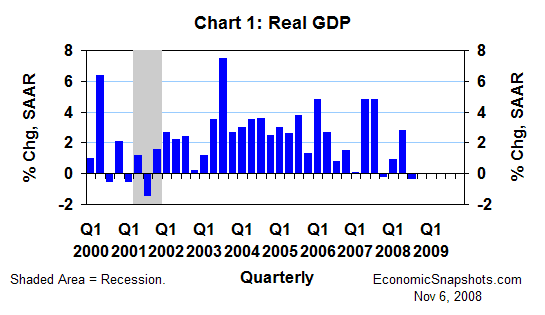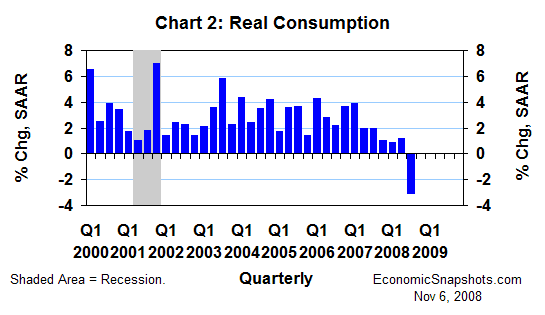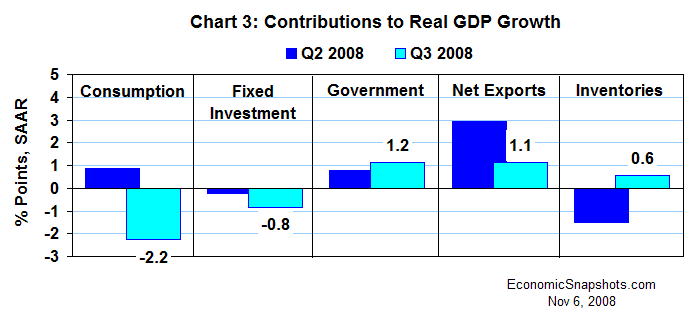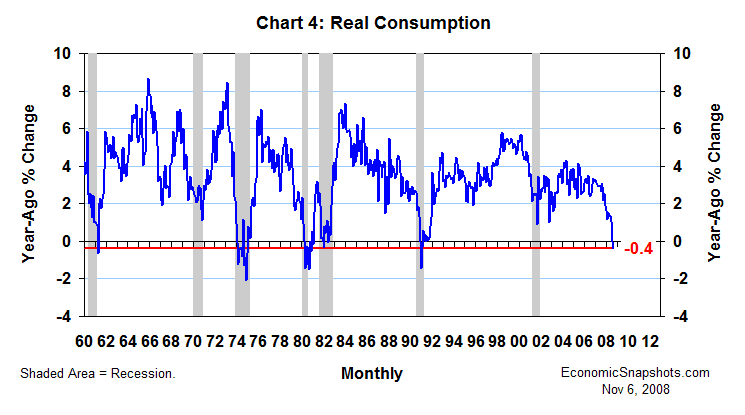
| Back to Index |
November 6, 2008 – In data released late last month, U.S. real GDP edged down at a 0.3% annual rate in Q3 after rising by 2.8% in Q2 (Chart 1).[1] Q3’s small GDP decline was the second in the last four quarters.

Though weak, this headline GDP outcome was still deceivingly strong. The more scary development in the Q3 data was the nosedive in real consumption (Chart 2).

Real consumption fell at a 3.1% annual rate in Q3, reflecting broadly-based weakness. That was its largest quarterly drop since Q2 1980, when it fell at an 8.6% annual rate. (The economy was in a recession then.)
Consumers are the heavyweights of the U.S. economy, accounting for almost 71% of U.S. GDP. Thus, this collapse in Q3 consumption subtracted a big 2.2 percentage points from real GDP growth in Q3 (Chart 3).

At the same time, total real fixed investment (in businesses and in housing) fell at a 5.6% annual rate in Q3 after falling by 1.7% in Q2. That Q3 decline trimmed another 0.8 percentage points from Q3 real GDP growth.
Putting these pieces together, real private domestic final demand (consumption plus fixed investment) fell at about a 3.6% annual rate in Q3.
Q3’s positive real GDP growth contributions from government spending, net exports and inventory investment offset much of this weakness.
But, that’s little comfort for the outlook. The lagged production and job cuts triggered by the sharp drop in Q3 consumption will be an important force working to keep the whole economy weak.
Further, it would be futile to look for a lasting recovery in real GDP growth without stronger consumption growth.
In the monthly data through September, the trend in consumption continued to slow (Chart 4).

Real consumption fell by 0.4% in September, compared to the same month last year. That was its weakest twelve-month stretch since the recession of 1990-91.
Bottom line: These data should remove any lingering doubts about avoiding a recession this year. The recession was here – and firmly entrenched – in Q3.
Suzanne Rizzo